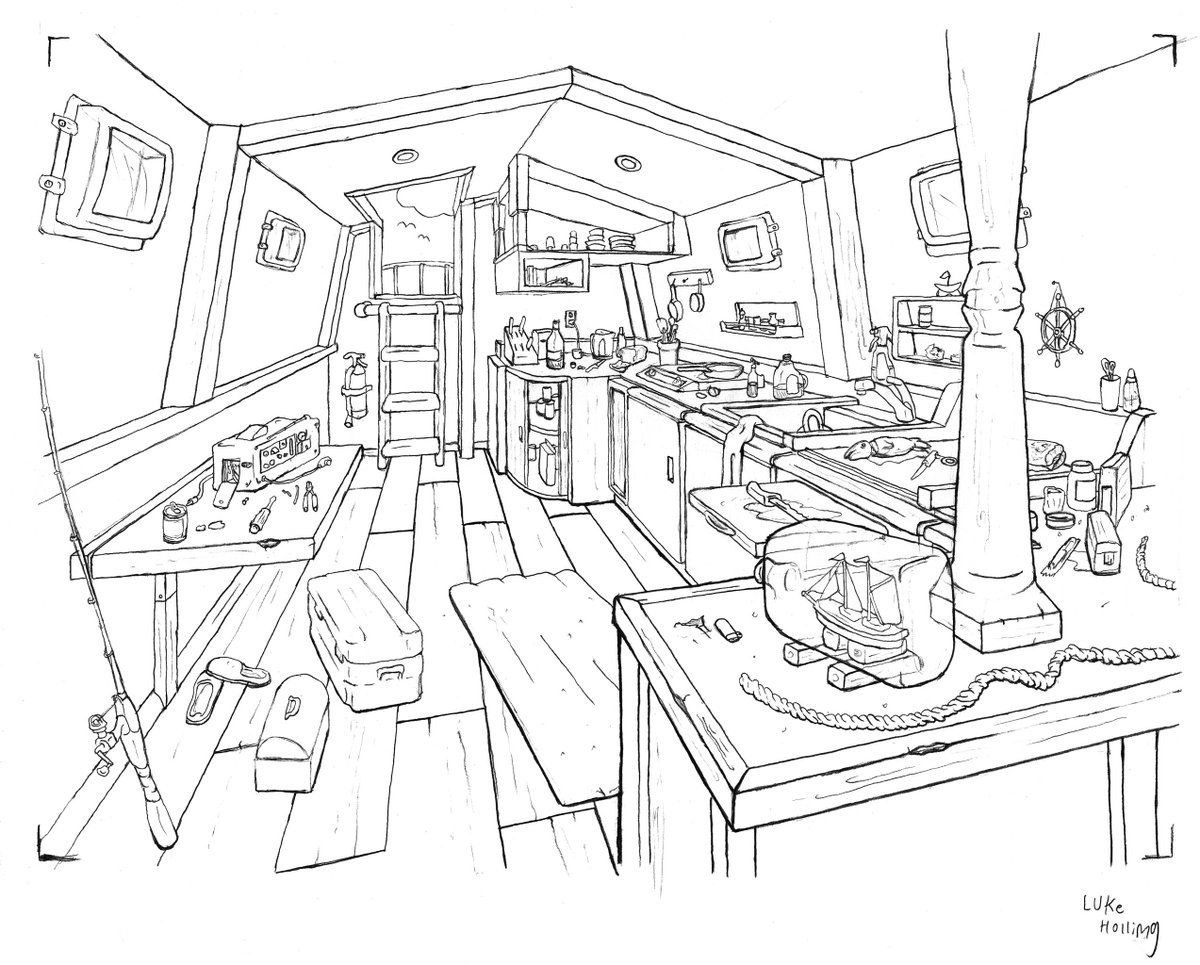Let me show you-
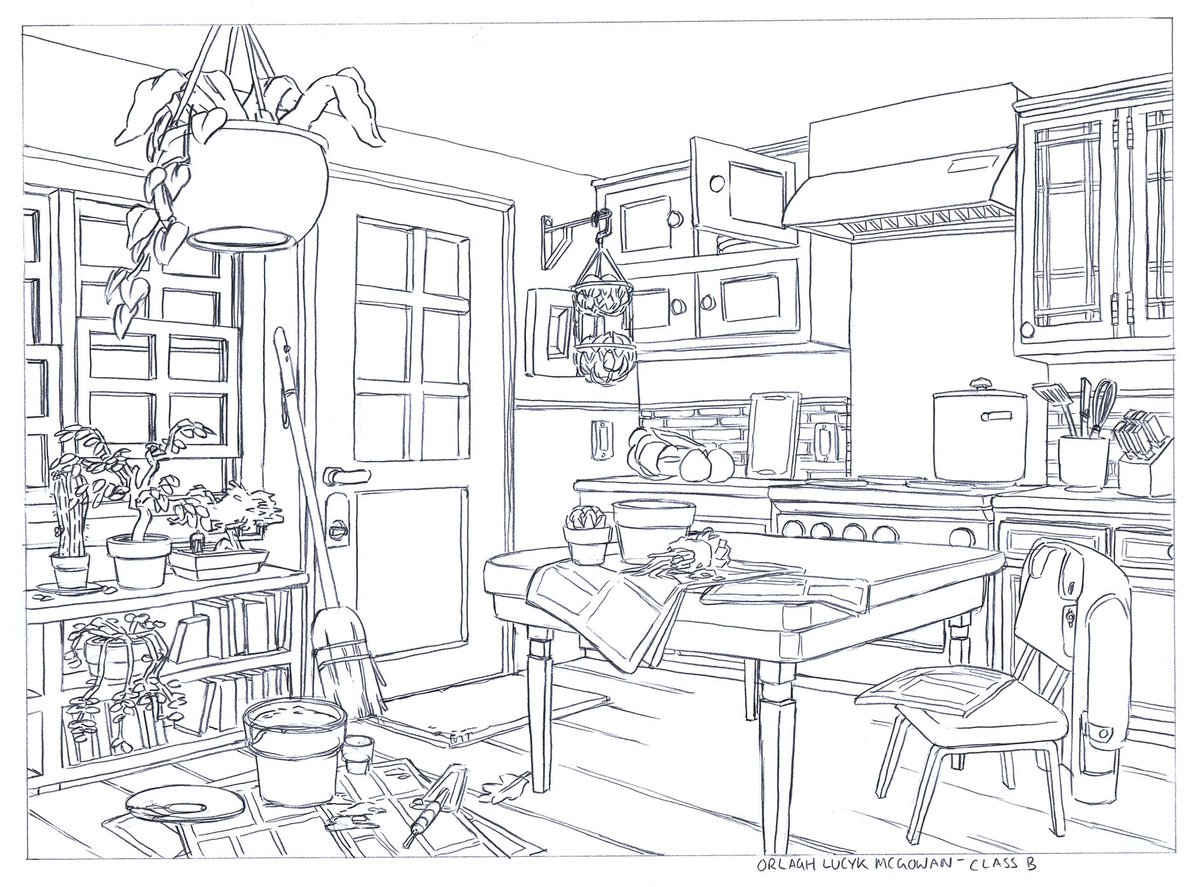
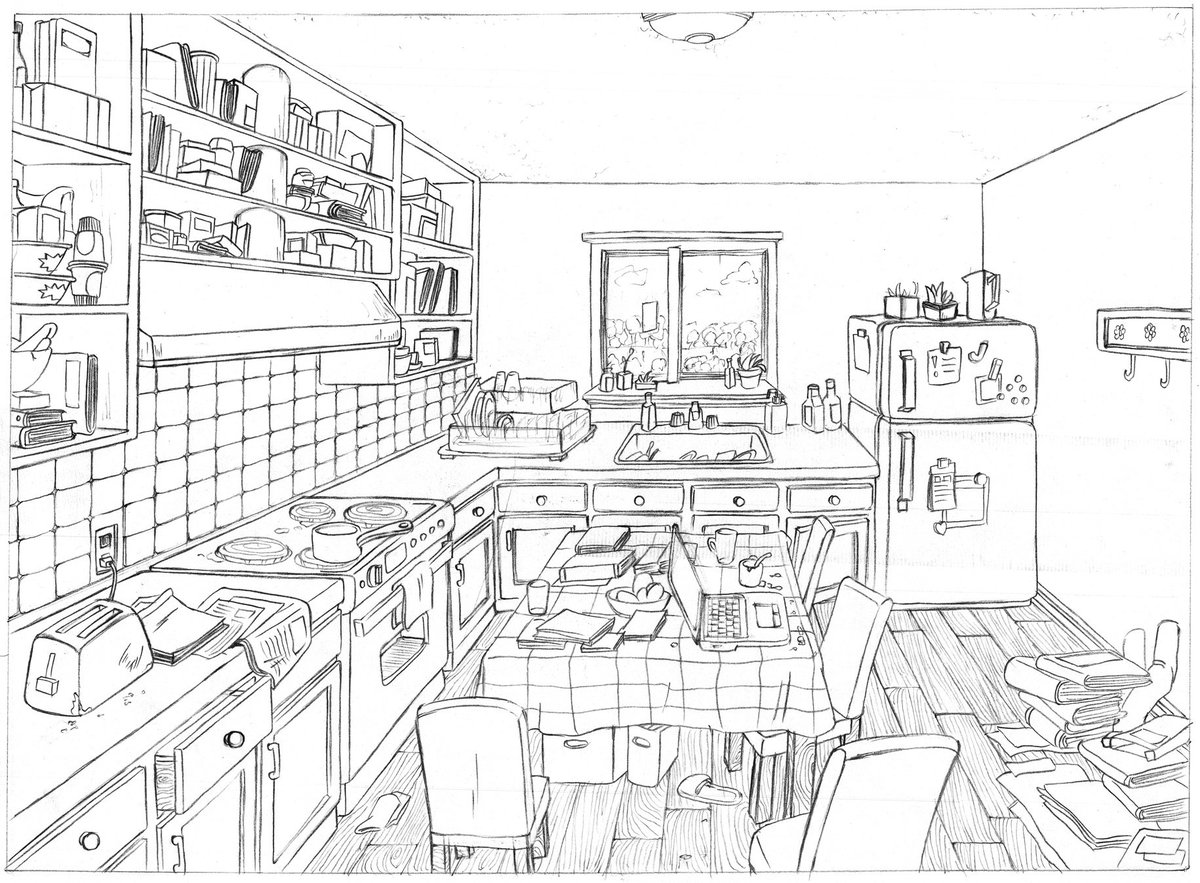
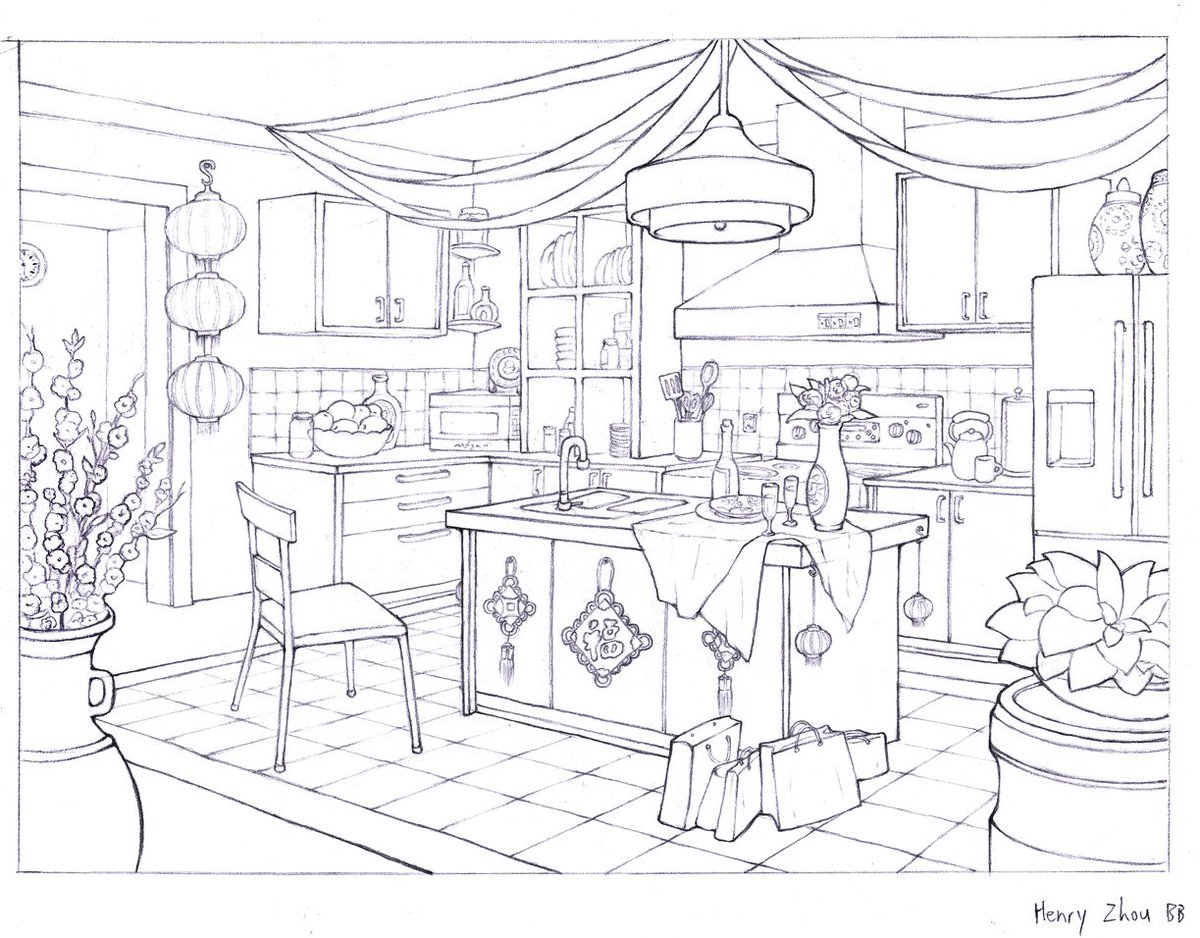
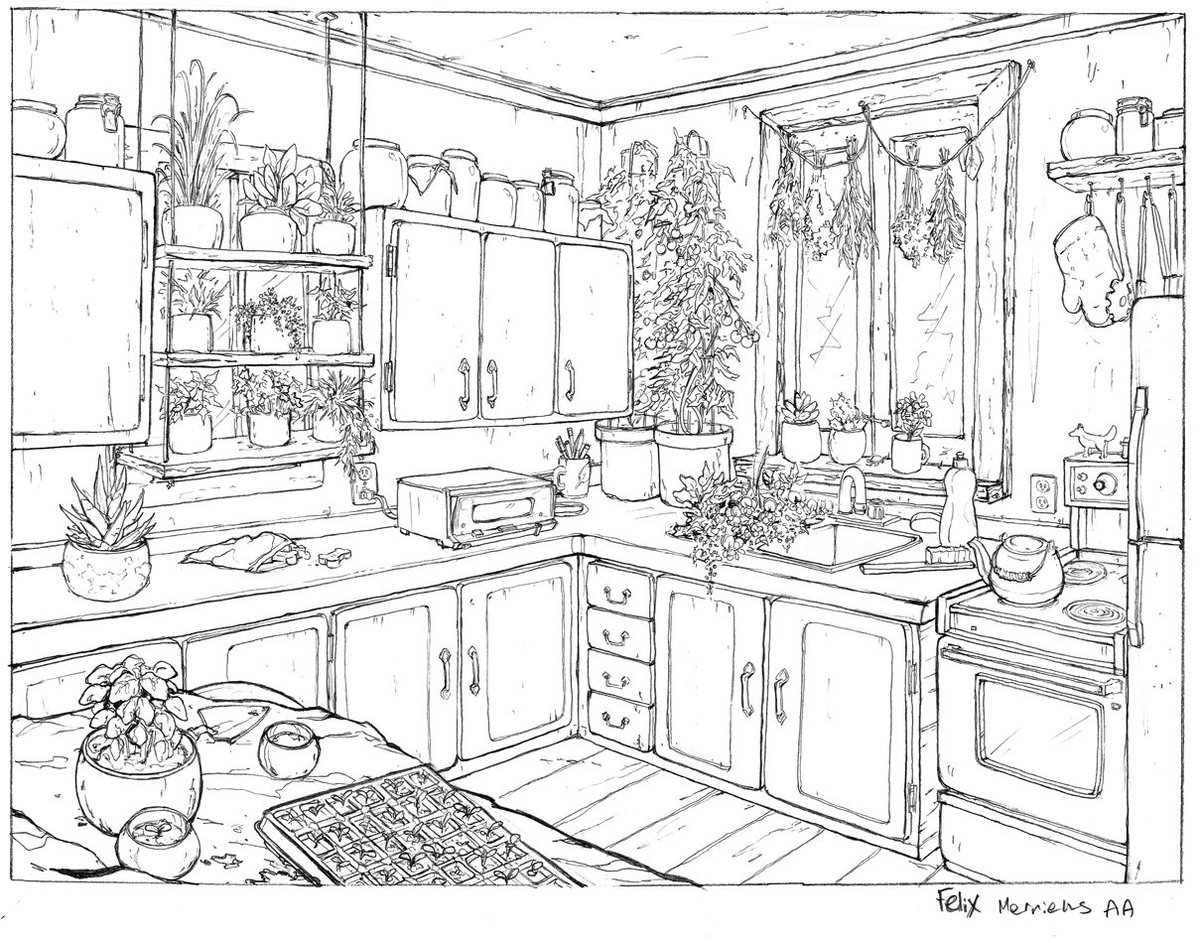
I choose an angle where the corner is close to the viewer because I wanted to emphasize the feeling that this is a small, cozy kitchen.
This is the first full layout-design the students produce at around month 3 in @SenecaCollege's Animation program, after reviewing basic perspective + construction, proportion, and object drawing assignments.
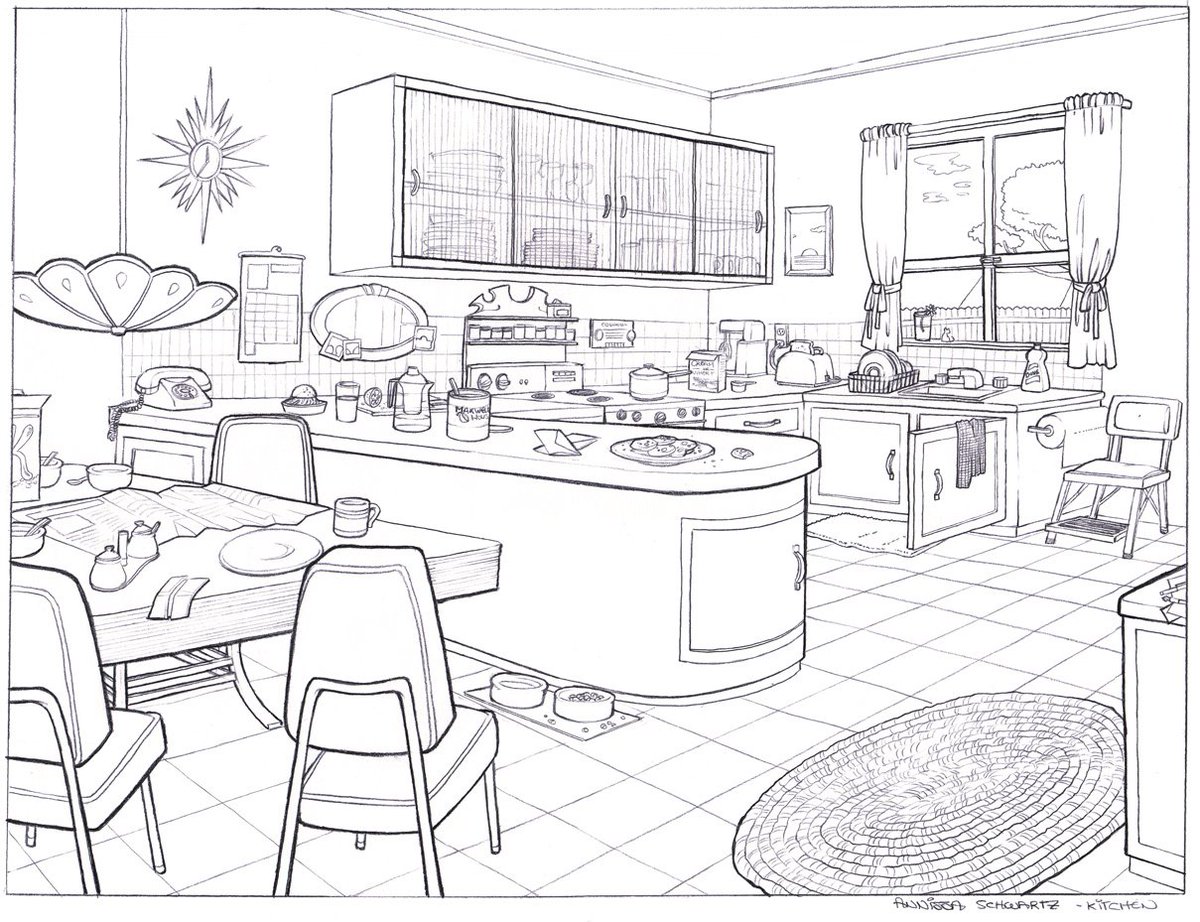
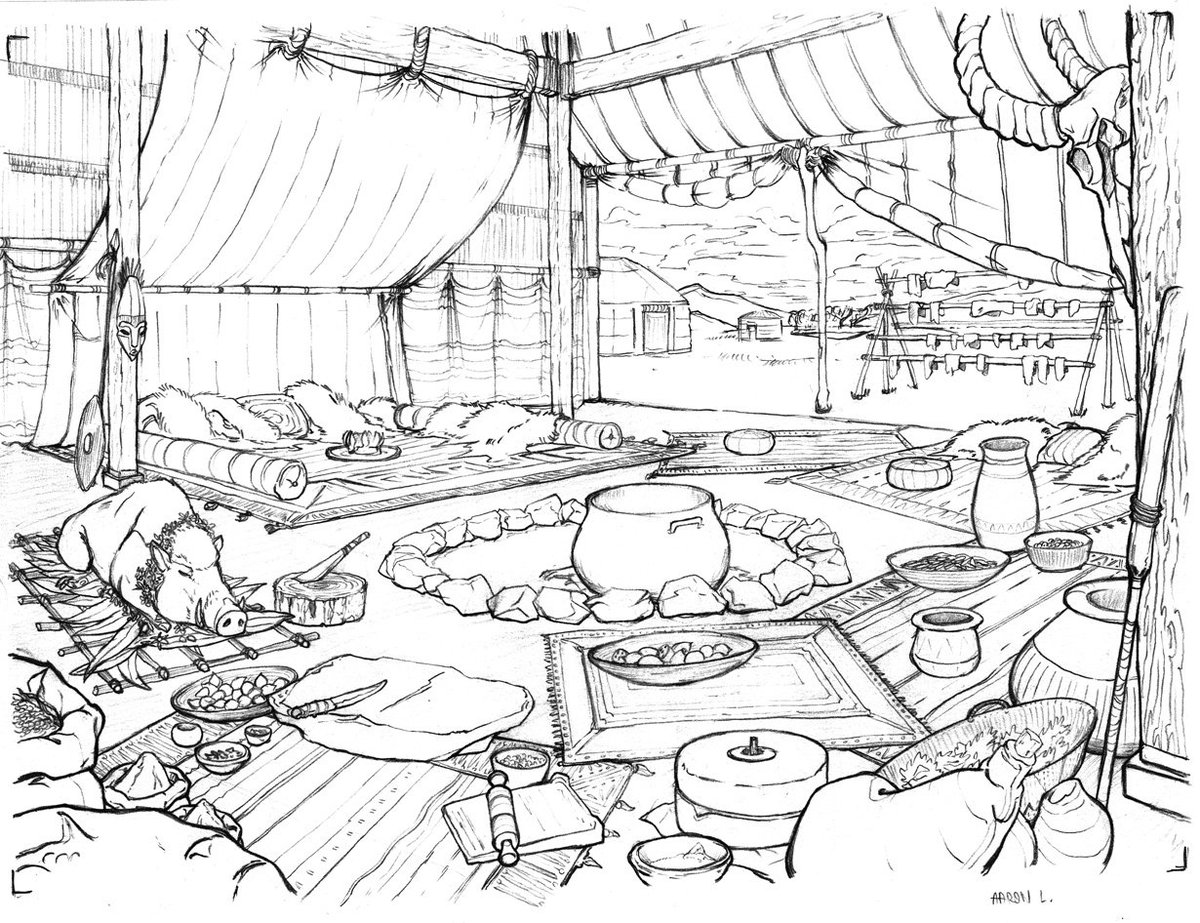
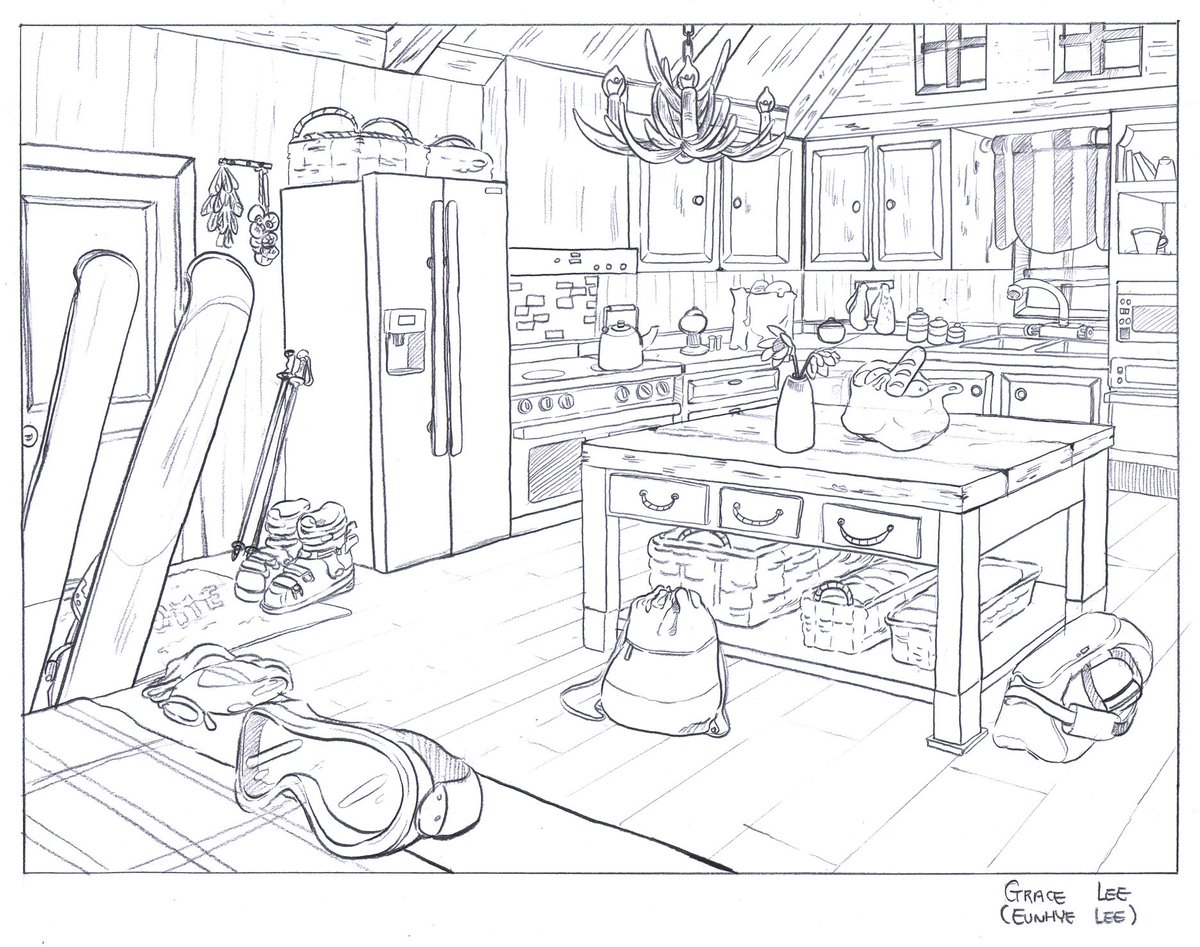
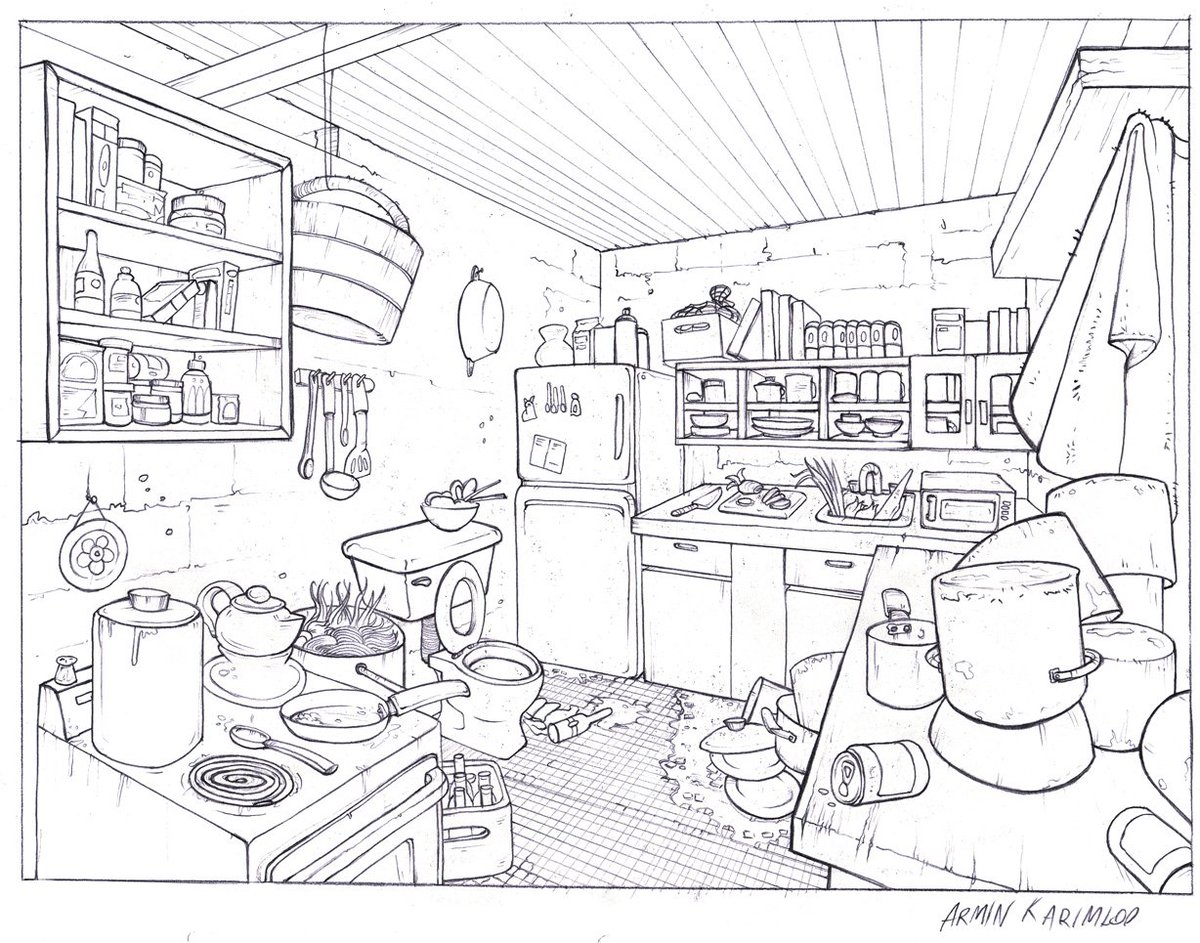
How is this space being used by its occupants and how can we show aspects of their personality and story through these objects?

















